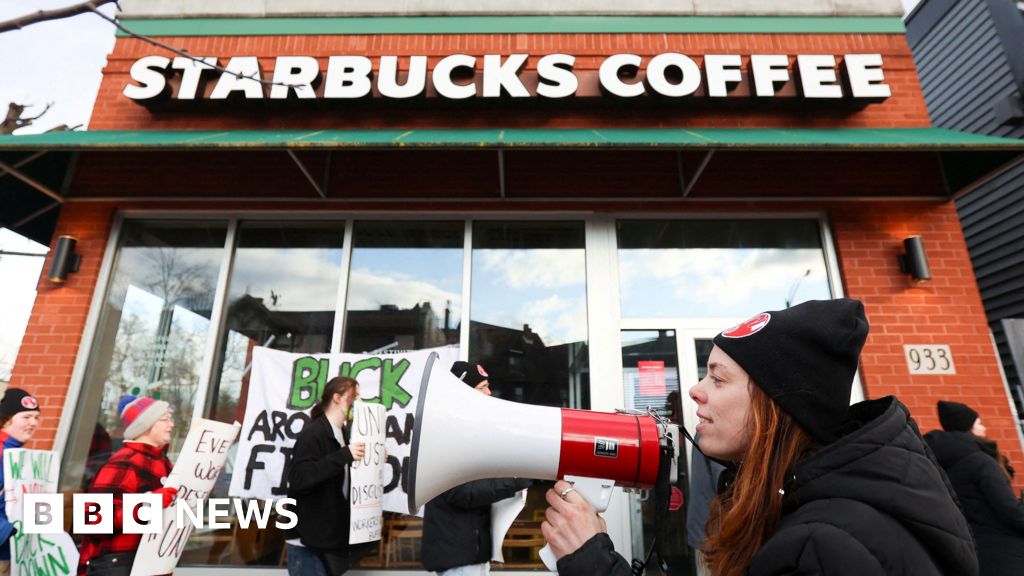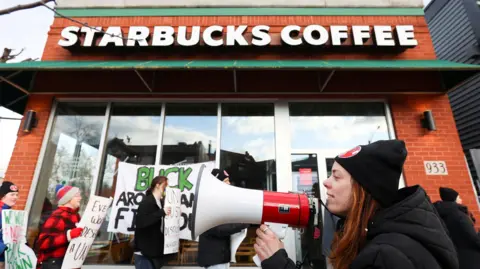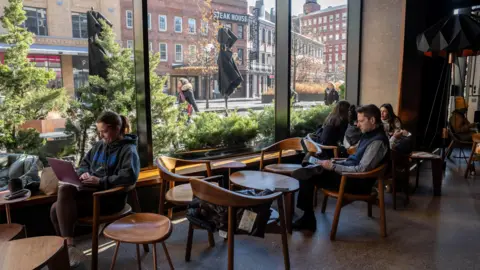Business
Kotak Mahindra Bank To Levy SMS Alert Fee From December; Waiver For Select Accounts & Balances

Last Updated:
Kotak Mahindra Bank will charge Rs 0.15 per SMS alert for Savings and Salary accounts from December 2025, with 30 free alerts monthly and waivers for higher balances.
Kotak Bank to Charge Rs 0.15 per SMS Beyond Free Limit Starting December
Starting December 2025, Kotak Mahindra Bank will begin levying nominal charges for SMS alerts related to transactions on Savings and Salary accounts. According to the bank, customers will be charged Rs 0.15 per SMS, with the first 30 alerts each month remaining free. The charges will apply once the free limit is exceeded.
These SMS alerts typically notify customers about key account activities, including UPI, NEFT, RTGS, and IMPS transfers, ATM withdrawals, cash deposits, cheque clearances, and debit or credit card transactions.
However, there is a waiver for accounts maintaining balances of Rs 10,000 (Rs 5,000 for 811 accounts).
While Kotak Mahindra Bank has clarified that the fee is nominal, the decision could impact users who rely heavily on text-based alerts rather than mobile app notifications.
It is important to note that Kotak Mahindra Bank isn’t the only bank that charges users for SMS alerts. Several other banks have also begun revising their SMS notification policies in recent months, citing operational costs and a gradual shift toward app-based and email notifications.
These types of accounts are excluded from charges:
-
Private Banking Program
-
Solitaire Program
-
811 Super Savings Account
-
Floating Rate Linked Savings Scheme
-
Privy League Program (Neon, Platinum, Black)
-
Kotak Easy Savings Account
-
Non Resident Accounts
-
Salary Account for Uniformed Services
-
Pragathi Deposits
-
Retail Banking RERA Savings Account
-
Kotak Government Business Savings Account
-
FCRA Utility Account
-
Kotak Retail Institutional Savings Account
-
Salary Account for Public Services
-
BSBDA for BSS Microfinance
-
Institutional Savings Account
-
Corporate Salary Tax Refund Account
-
SPENDZ
-
Retail Banking Self Maintaining RERA SB A/C
-
ESCROW Saving Account
-
Kotak FCRA Savings Account
-
Financial Inclusion Savings Accounts
-
Basic Savings Bank Deposit Account (Pradhan Mantri Jan Dhan Yojana)
-
Xpress Limited KYC Saving Account

Varun Yadav is a Sub Editor at News18 Business Digital. He writes articles on markets, personal finance, technology, and more. He completed his post-graduation diploma in English Journalism from the Indian Inst…Read More
Varun Yadav is a Sub Editor at News18 Business Digital. He writes articles on markets, personal finance, technology, and more. He completed his post-graduation diploma in English Journalism from the Indian Inst… Read More
November 11, 2025, 19:36 IST
Read More
Business
Starbucks’ barista strike could undermine its turnaround plan

Danielle Kaye,Business reporter and
Natalie Sherman,Business reporter
 Reuters
ReutersStarbucks has been working hard to bring back customers, promising faster service and a return its coffeehouse roots, with ceramic mugs and hand-written notes.
But though sales show signs of perking up, the company is still wrestling with a years-long labour fight that threatens to hamper its turnaround.
Picket lines could greet customers collecting their morning latte at some US stores on Thursday, as the company faces another strike by unionised baristas, calling for better pay and increased staffing.
The walkout, expected to affect stores in at least 25 cities, is the third major strike to hit the company in the US since the union, Starbucks Workers United, launched four years ago.
Baristas and their union say the new turnaround policies, have only added to their workload.
“Every single day at this company, as of recently, has been very, very difficult to be a barista,” said Michelle Eisen, a spokesperson for the union, which says it represents workers at more than 600 stores in the US.
“You should not be evolving to the point of running your workers to the ground,” said Eisen, who worked as a barista for 15 years before leaving Starbucks this May.
Starbucks says it does not expect the strike to disrupt operations at the “vast majority” of its more than 10,000 company-operated stores in the US.
But the action, timed to coincide with Starbucks’ Red Cup day, a major holiday sales event, risks returning unwanted scrutiny to the company at a delicate moment.
 Getty Images
Getty ImagesIn recent years the brand has faced consumer boycotts, a wave of new competitors and a customer backlash over high prices, as well as turmoil in its leadership ranks.
The arrival last year of new chief executive Brian Niccol, a veteran of successful turnarounds at Chipotle and Taco Bell, raised hopes he could do the same for Starbucks. Investors sent the chain’s shares up 24%.
He quickly embarked on changes, part of what he called his “Back to Starbucks” strategy. He banned non-customers from bathrooms, enforced a stricter dress code for staff and re-introduced comfy seating that he said would help restore the chain’s appeal.
At the same time, Starbucks has outlined plans to invest more than $500m to improve coffeehouse staffing and training.
‘Building momentum’
Progress has been slow. Last month, Starbucks reported 1% growth in sales at global stores open at least one year – its first quarterly increase in almost two years. But in the US, sales were flat.
“We have more work to do, but we’re building momentum,” Mr Niccol said on a recent call with analysts.
But the new strategy has been accompanied by hundreds of store closures, thousands of layoffs and the sale of a 60% stake in its China business, and labour tensions have continued to fester.
Starbucks Workers United leaders say relations improved last year, but that contract discussions stalled when Mr Niccol – who was in charge of Chipotle when it faced complaints of labour rights violations – took the helm of the company last September.
Even after the two sides agreed to bring in a mediator in January, they remained at odds over pay, staffing and hundreds of unresolved charges of unfair labour practice.
 Getty Images
Getty ImagesA union spokesperson said Starbucks has offered no pay raises in the first year of a contract, then 2% in the years following, which he said fails to account for inflation and the cost of healthcare. Baristas overwhelmingly voted down the contract offer in April.
The company, on the other hand, blames the union for stalled talks. The union’s demands for pay increases would “significantly affect store operations and customer experience”, Sara Kelly, the company’s chief partner officer, said in a statement last week.
“When they’re ready to come back, we’re ready to talk,” Jaci Anderson, a spokesperson for Starbucks, said in a statement.
“Any agreement needs to reflect the reality that Starbucks already offers the best job in retail,” she added, pointing to low staff turnover rates, and pay and benefits, that the company says add up to an average hourly wage of $30.
Pressure on the brand
Unionised coffeeshops account for only about 5% of all Starbucks stores that are directly owned by the corporation in the US, but union organisers say they have added roughly 100 more stores over the last 12 months.
This continued stand-off could pose both an operational and a reputational risk for the firm, say analysts.
The brand had already shown signs of being under pressure, said Laurence Newell, managing director in the Americas for Brand Finance, a consultancy that tracks brand strength. Starbucks fell to 45th place in its 2025 annual ranking – its lowest level since 2016 – driven in part by a decline in its reputation among customers.
“Happy customers have to come from happy employees,” said Stephan Meier, a professor of business strategy at Columbia Business School. “You can’t do that top down.”
This week, more than 80 Democrats in the House and Senate sent letters to Mr Niccol, accusing Starbucks of “union-busting” and urging the company to bargain in good faith.
Joe Pine, management adviser and co-author of the “Experience Economy”, said Mr Niccol had a lot on his plate, but he was “surprised” that he had allowed the issue to remain unresolved.
“This would seem to be one of the first things you need to do: you need to have your people on board,” he said.
Business
A ‘Pushpak’ On Land? This Rail Network Will Let Trains Zoom 1,000 KM In Just 4 Hours, Connecting Multiple Countries

Trans-European Transport Network: Europe is gearing up for a transformative high-speed train network that could change the way people travel across the continent. According to the European Commission, the plan aims to connect multiple countries with trains capable of reaching speeds of 250 kilometres per hour. By 2040, passengers will be able to cover long distances in nearly half the time it takes today.
At present, a journey from Berlin to Copenhagen takes roughly seven hours. Under the new network, the same trip will take just four hours by 2030. Similarly, the Sofia to Athens route, which presently requires 14 hours, will be completed in six hours by 2035.
Direct high-speed links are also proposed between Paris and Lisbon via Madrid and Warsaw to Tallinn via Riga, making international travel faster and more convenient than ever before.
The plan marks a renaissance for European rail travel, creating a modern, efficient and eco-friendly transportation era. Travellers moving from Prague to Rome will be able to complete their trip in just 10 hours, while Stockholm to Copenhagen journeys will shrink to four hours.
This network is expected to strengthen tourism, commerce and cultural exchange across the continent.
The project forms a key part of the European Commission’s ambitious Trans-European Transport Network (TEN-T), which seeks to integrate railways, roads, ports and air transport into a unified infrastructure.
Environmental experts are confident that this shift from air and car travel to high-speed rail could drastically reduce carbon emissions. If passengers prefer trains for long-distance journeys, thousands of tons of greenhouse gases could be avoided annually.
Although cost details are still being finalised, officials promise that the network will provide a budget-friendly alternative to flights. Faster travel times combined with affordability mean that high-speed trains could become a preferred choice for business and leisure travellers.
Europe is set to witness a new era where cities feel closer, journeys become faster and rail travel reclaims its place as the lifeblood of continental mobility.
With trains that promise efficiency, sustainability and seamless connectivity, this high-speed revolution is poised to reshape the way Europe moves.
Business
Airlines warn flight cancellations will continue even after shutdown ends

A board shows two cancelled American Airlines flights and three on time at Logan International Airport in Boston, Massachusetts, U.S., Nov. 7, 2025.
Brian Snyder | Reuters
Flight disruptions that have marred air travel for millions of people in recent weeks could continue even after the government shutdown ends, airlines and the secretary of Transportation said.
The Senate on Monday night passed a bill that could end the longest federal government shutdown in history, sending it to the House for a vote.
But Transportation Secretary Sean Duffy said Tuesday that won’t be an immediate fix.
“We’re going to wait to see the data on our end before we take out the restrictions in travel but it depends on controllers coming back to work,” Duffy said at a press conference at Chicago O’Hare International Airport.
Duffy also warned severe disruptions over the past few days could get much worse without a deal.
The Senate vote came as staffing shortages of air traffic controllers, who are required to work without their regular paychecks in the shutdown, have delayed or canceled thousands of flights, with issues worsening in recent days. Controllers missed their second full paychecks of the shutdown this week, and some have taken up second jobs and are working with increasing levels of stress, government and union officials have said.
Even if the House passes the bill that will fund the federal government through January, airlines said they will need time to readjust.
“Airlines’ reduced flight schedules cannot immediately bounce back to full capacity right after the government reopens,” Airlines for America, a lobbying group for airlines including Delta Air Lines, United Airlines, American Airlines and Southwest Airlines, said late Monday. “It will take time, and there will be residual effects for days. With the Thanksgiving travel period beginning next week and the busy shipping season around the corner, the time to act is now to help mitigate any further impacts to Americans.”
Airlines will need time to reconfigure schedules and position planes and crews, something they were forced to quickly address with last week’s required flight cuts.
More than 5 million travelers have been affected by airline staffing issues since the shutdown began on Oct. 1, Airlines for America said . The disruptions have sent some passengers looking for alternatives, from buses to rental cars and even private jets.
Last Friday, the Trump administration started requiring commercial airlines to cut 4% of their domestic flights at 40 busy U.S. airports, with larger reductions on the way if the shutdown doesn’t end, as officials blamed the strain on air traffic controllers.
Aviation groups have said that record numbers of travelers are expected for the Thanksgiving period, with the holiday just over two weeks away.
Just over 5% of the scheduled 22,811 U.S. departures were canceled on Tuesday, a relatively light day for travel generally, according to aviation data firm Cirium. That’s down from an 8.7% cancellation rate on Monday, or 2,239 flights, and 2,633 cancellations on Sunday, or 10.2% of the schedule. Delays had also piled up with staffing shortages and bad weather at major hubs, including Chicago O’Hare.
The shutdown, like the one in late 2018 to early 2019, has thrust aviation’s strains into the spotlight. The previous shutdown, however, ended hours after a shortfall of air traffic controllers snarled air traffic in the New York area.
Aviation groups on Tuesday urged lawmakers to not only end the shutdown but to provide more Department of Transportation funding to help modernize air traffic control and hire more controllers, who were in short supply even before the shutdown began.
“The government shutdown has disrupted that work and slowed the strong momentum we have built for modernization,” the Modern Skies Coalition, which includes major airline, airport and aerospace groups such as Boeing, GE Aerospace and others, as well as labor unions, wrote in an open letter to Congress.
President Donald Trump on Monday threatened to dock pay of air traffic controllers who are absent. “All Air Traffic Controllers must get back to work, NOW!!!,” he wrote in a post on Truth Social, adding that he would recommend $10,000 bonuses for any air traffic controllers who weren’t absent during the shutdown.
Duffy said he supported Trump’s idea and that he was concerned about the dedication and “patriotism” of controllers who haven’t shown up for work. “If we have controllers who systemically weren’t doing their job, we will take action,” he said.
Duffy said controllers would receive about 70% of their pay within two days of the shutdown ending.
A day earlier, Nick Daniels, president of the National Air Traffic Controllers Association union, said it took about 2½ months before the workers were made whole in the shutdown that ended in 2019.
Duffy said the shutdown has made air traffic controller staffing more challenging, with 15 to 20 of them retiring a day instead of around four retiring a day before the government closure. He said the country is roughly 2,000 controllers short of what the system needs.
“The job of keeping aviation safe and secure is tough every day, but forcing federal employees to do it without pay is unacceptable,” the Modern Skies Coalition wrote in its open letter. “We owe public servants at the Federal Aviation Administration (FAA) and other agencies supporting aviation, like the National Transportation Safety Board, the Transportation Security Administration and Customs and Border Protection, a debt of gratitude and a swift ending to this shutdown.”
-

 Tech1 week ago
Tech1 week agoCISOs in court: Balancing cyber resilience and legal accountability | Computer Weekly
-

 Fashion1 week ago
Fashion1 week agoCoach reconnects with Bank & Vogue for upcycled bags using corduroy
-

 Business1 week ago
Business1 week agoFirst new Amazon electric heavy goods vehicles hit UK roads
-

 Sports1 week ago
Sports1 week agoNFL broadcaster Cris Collinsworth makes government shutdown joke as Seahawks clobber Commanders
-

 Tech1 week ago
Tech1 week agoThe Security Interviews: Colin Mahony, CEO, Recorded Future | Computer Weekly
-

 Fashion1 week ago
Fashion1 week agoGermany’s Adidas achieves highest-ever quarterly sales in Q3 2025
-

 Sports1 week ago
Sports1 week agoSources: QB Daniels dislocated elbow in loss
-

 Business1 week ago
Business1 week agoHow To Claim Investments Of Deceased Holders: A Step-By-Step Guide For Mutual Funds & Bank Accounts






